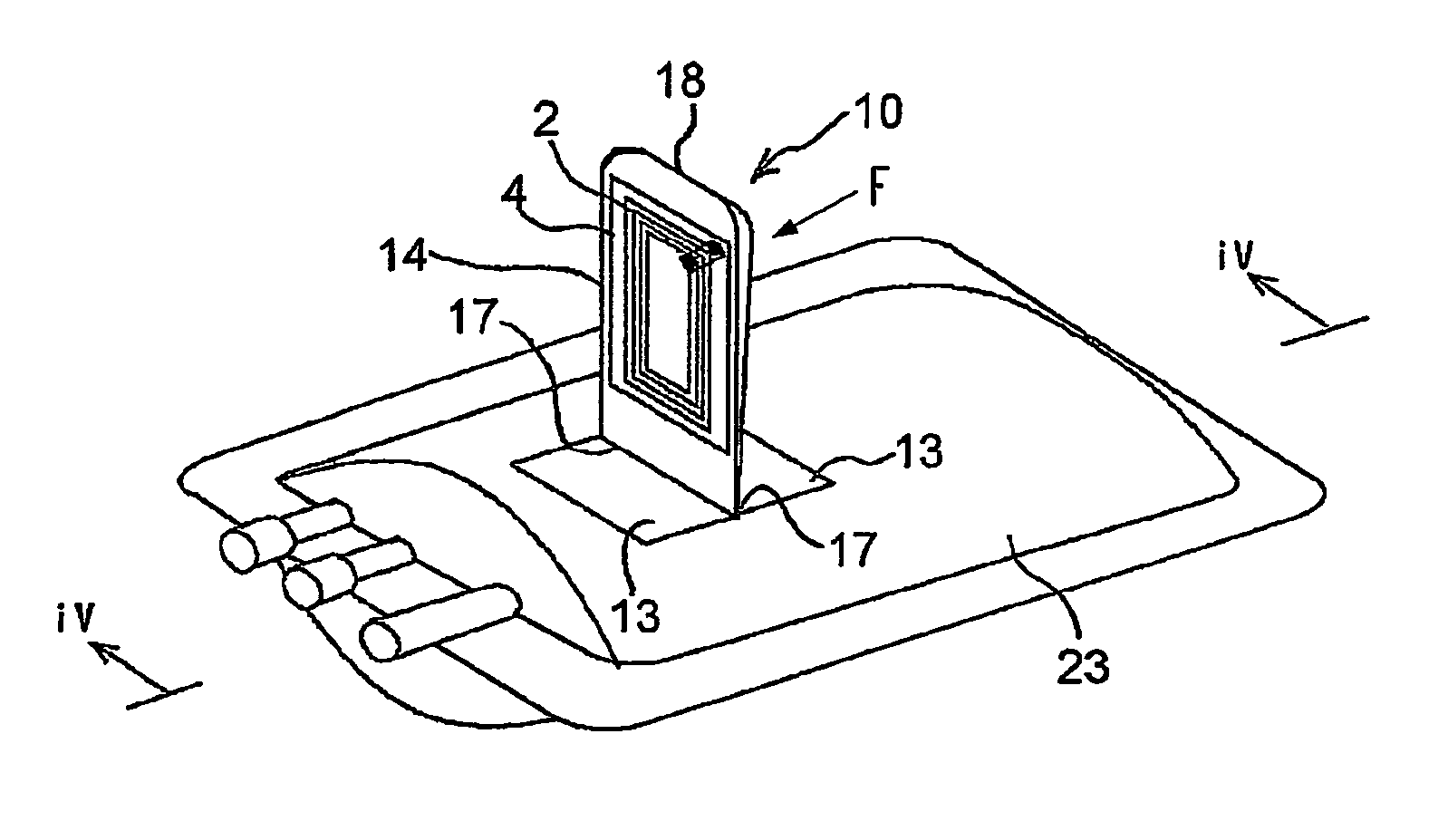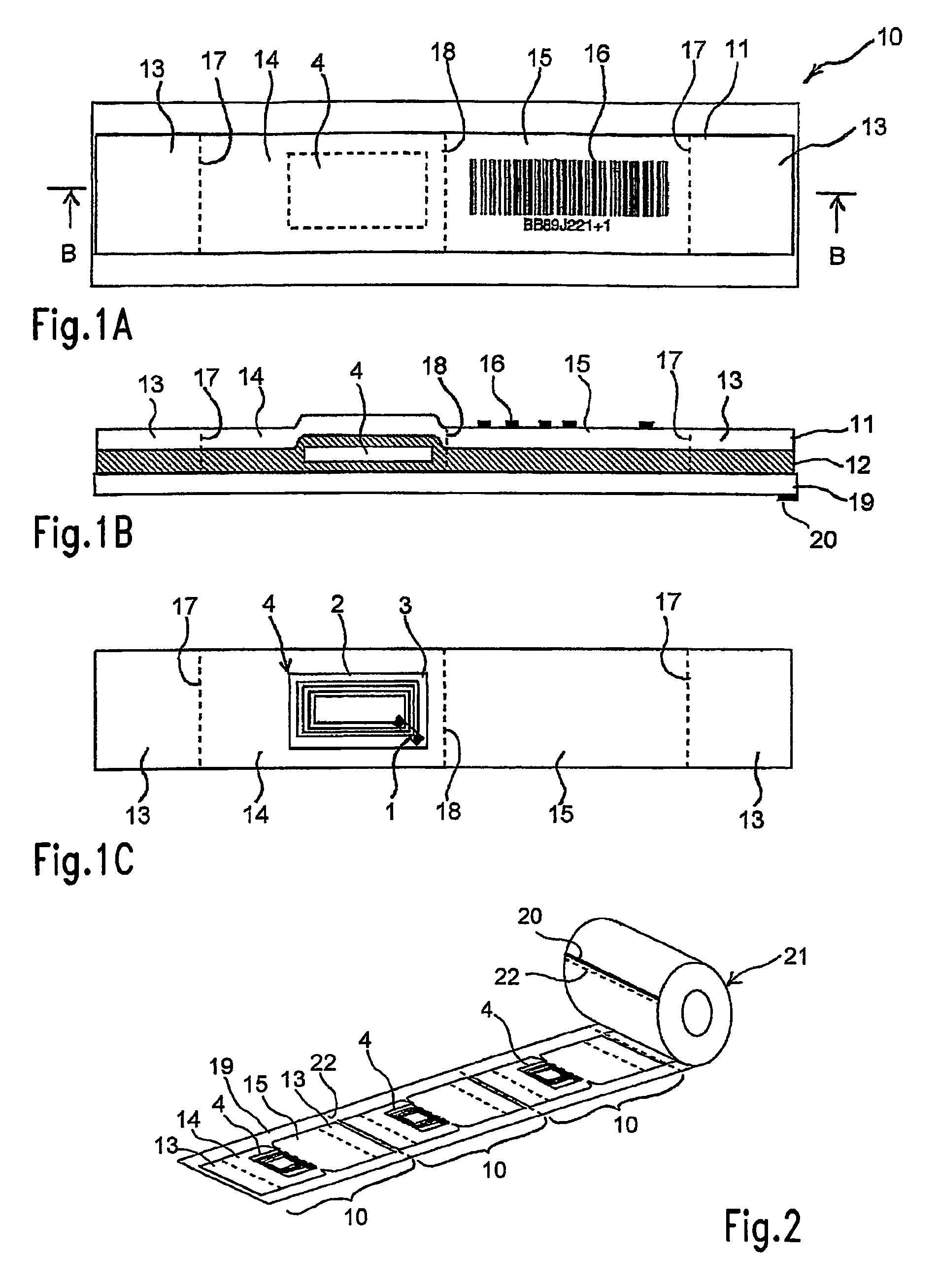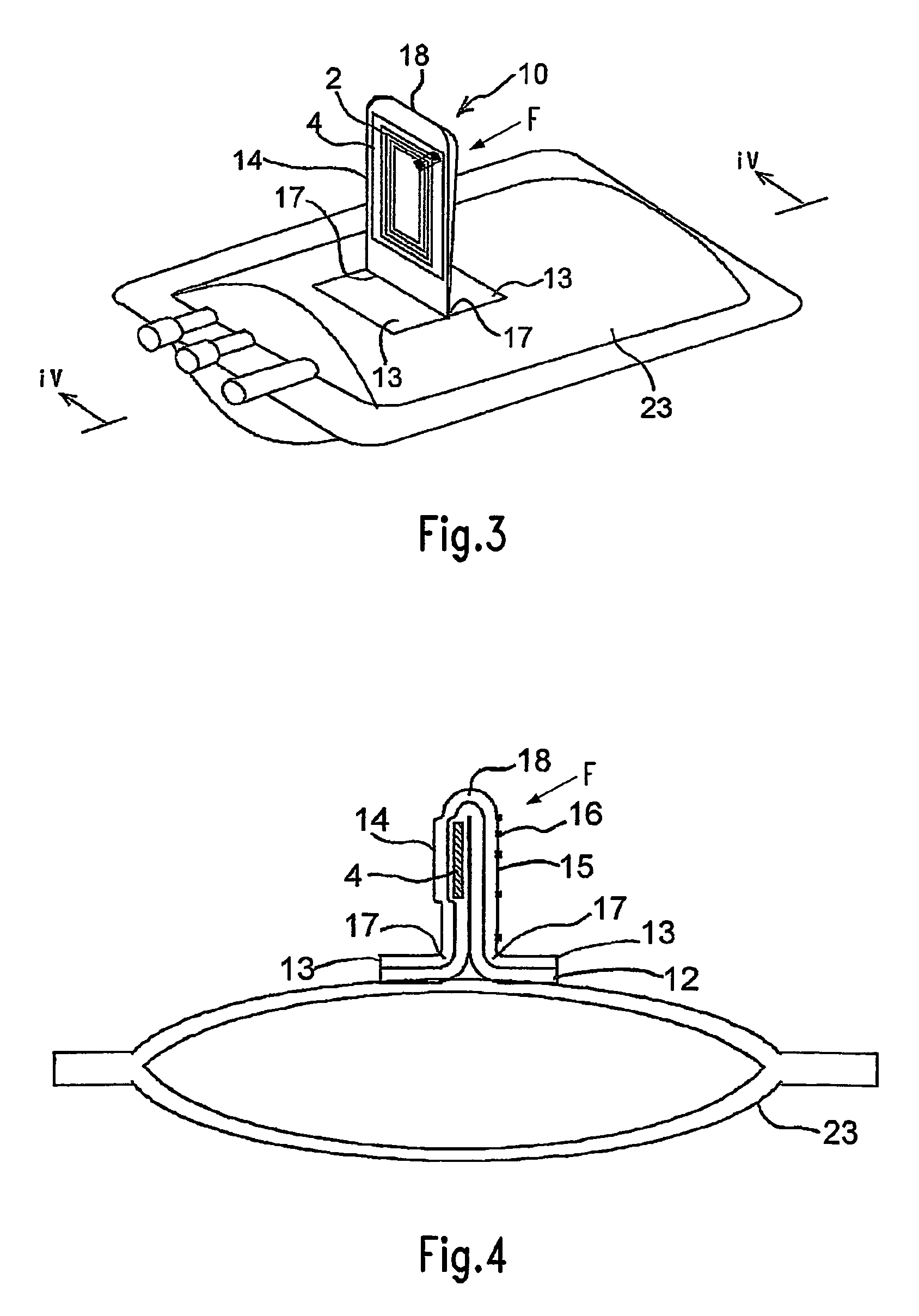Label
a technology of labels and labels, applied in the field of labels, can solve the problems of insufficient label performance, inability to read or write information of ic labels, and greatly impede label performance, so as to avoid the danger of label substrate being erroneously cut, easy to be bent and pasted together, and easy to be ben
- Summary
- Abstract
- Description
- Claims
- Application Information
AI Technical Summary
Benefits of technology
Problems solved by technology
Method used
Image
Examples
Embodiment Construction
[0097]In FIG. 1, 10 indicates one unit of an RFID label according to an embodiment of the present invention. This RFID label 10 is constructed substantially from a strip-shaped label substrate 11 consisting of a single material or composite material such as a paper, plastic film, synthetic paper, non-woven fabric or the like, an adhesive agent 12 which is applied as a coating to the back surface of this label substrate 11, the abovementioned IC tag 4, and a peeling paper 19 whose surface is coated with a peeling agent such as silicone or the like.
[0098]In the above-mentioned label substrate 11, both ends in the direction of extension constitute pasting parts 13 that are pasted to the object of pasting, and the central part constitutes an IC tag or RFID tag holding part 14 on which the abovementioned IC tag 4 is pasted and held, and an adjacent printing recording part 15. In the example shown in the figures, the back surface of the IC tag 14 is further coated with an adhesive agent 1...
PUM
 Login to View More
Login to View More Abstract
Description
Claims
Application Information
 Login to View More
Login to View More - R&D
- Intellectual Property
- Life Sciences
- Materials
- Tech Scout
- Unparalleled Data Quality
- Higher Quality Content
- 60% Fewer Hallucinations
Browse by: Latest US Patents, China's latest patents, Technical Efficacy Thesaurus, Application Domain, Technology Topic, Popular Technical Reports.
© 2025 PatSnap. All rights reserved.Legal|Privacy policy|Modern Slavery Act Transparency Statement|Sitemap|About US| Contact US: help@patsnap.com



